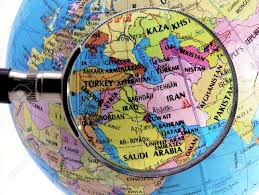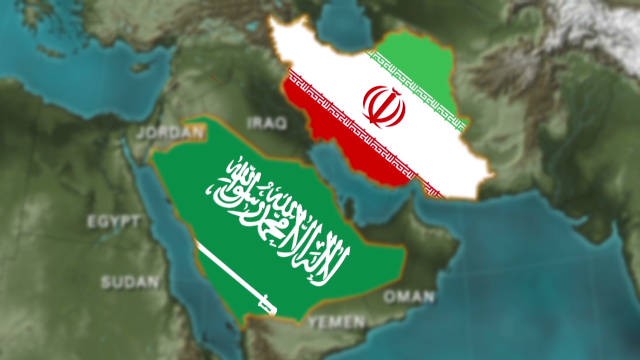“Palestinian Arabs might have ended up governing their own country if a Russian Jew living in Manchester had not developed a chemical process for extracting nail-varnish remover from horse-chestnuts.” —Karl Sabbagh
In a lackluster speech on December 6, 2017, U.S. president Donald Trump announced the official recognition of Jerusalem al-Quds as the capital of the Israeli entity and directed the U.S. state department to make arrangements to move the U.S. embassy there from Tel Aviv. While Jerusalem was acknowledged as the Israeli capital by U.S. Senate Concurrent Resolution 106 in 1990 and the embassy move was mandated by the Jerusalem Embassy Act of 1995, Trump has once again managed to spark worldwide outrage by declaring publicly what most intelligent observers had long since surmised.
The timing of Trump’s address on al-Quds was ironic, for one hundred years earlier British General Edmund Allenby, after having captured the city, which had been under the rule of the Ottoman Turks, spoke of “the establishment of national governments and administrations in those countries deriving authority from the initiative and free will of those people themselves.” Allenby’s words, however, had previously been neutered by the now notorious Balfour Declaration of November 2, 1917, which declared the British government to “view with favour the establishment of a national home for the Jewish people, and will use its best endeavours to facilitate the achievement of this object,” and indeed “His Majesty’s Government” did.
The Balfour Declaration would never have materialized without the strident efforts of a Jewish chemist named Chaim Weizmann, a Zionist who later became the first president of the Israeli entity. Originally from southern Russia in the Pale of Settlement, Weizmann left his homeland for Switzerland where he earned a doctorate in chemistry in 1904 from the University of Geneva. Later he immigrated to Britain where he accepted a position at the University of Manchester until he was tapped by the British government in 1916 to work on munitions. Weizmann developed a new process to make acetone, which is used in nail polish remover and for making cordite, a propellant used in British artillery projectiles, and when Munitions minister David Lloyd George was faced with a shortage of acetone, Weizmann came to his rescue. Lloyd George later remarked, “Acetone converted me to Zionism,” and after becoming prime minister in December 1916, he rewarded Weizmann by his full support for a “national home for the Jewish people” in Palestine.
To be understood, the Balfour Declaration must be viewed through the lens of Britain at war against Germany shortly after the Russian Revolution and a mutiny by French troops, events that threatened to leave the British without allies. Further fueling British fears of fighting the war singlehandedly were rumors that Germany was contemplating a pro-Zionist declaration to entice the Russians to leave the war, which the Bolsheviks did on November 7, 1917 when they entered into peace negotiations with the Germans. Compounding British anxiety was the reality that most American Jews at the time favored supporting Germany over Britain; those from Germany retained fond memories of their former homeland while those from Russia recalled the Tsar’s pogroms and transferred this antipathy to Britain, Russia’s ally.
Knowing that U.S. president Woodrow Wilson held strong convictions concerning self-determination of peoples, British prime minister Lloyd George sought the help of American Jews to convince Wilson of the strategic importance of a British invasion and occupation of Palestine towards victory in the First World War. The plan conceived with the help of Chaim Weizmann was to portray the Zionist project to Wilson as Jewish self-determination in Palestine, thereby averting any accusations of post-war annexation of conquered lands. American Jewry had to be enticed to support the British war effort, so in exchange, Britain pledged to support the Zionist objectives in Palestine, but this also required the help of such notables as U.S. Supreme Court justice Louis Brandeis, who headed the Zionist organization in the U.S. and was close to president Wilson. It was Brandeis who informed Weizmann of the U.S. president’s interest in Zionism.
The other side that had to be convinced to join with Britain in the war effort against the Ottoman Empire and Germany was the Arabs, who were also anticipating their own self-determination at the end of the First World War. To that end, British diplomat Mark Sykes wrote a declaration of assurances to Sharif Hussein bin Ali, the leader of the Arab Revolt, which Hussein declared against the Turks in 1916. Sykes assured that the Palestinian Arabs would be granted political freedom and that the Balfour Declaration announcing British support for a Jewish homeland would be applied only as would be “compatible with the freedom of the existing population, both economic and political.” As a result, Hussein was deliberately duped by Sykes into accepting the idea that Jewish immigration into Palestine would not amount to much. The British charade became apparent in 1918 when the Bolsheviks published copies of the British and French secret plans to carve up the Middle East at war’s end based on their respective self-interests.
It should be mentioned that the Zionists hedged their political bets in case Britain did not emerge from the First World War victorious by approaching the German and Turkish governments with proposals delivered by the Zionist organization’s representative in Istanbul, Richard Lichtheim. Pointing out the anticipated gratitude of Jewish Americans, Lichtheim listed the advantages of German support for the Zionist project in Palestine, noting the common German language and emphasizing the business connections of the Jews already there. To sweeten the deal, Lichtheim even offered to arrange for a Zionist armed force to fight against the British in the Middle East alongside their Turkish and German allies. As Palestinian author Karl Sabbagh explained, “The unique status of Jews in global politics made this sort of double-dealing possible.”
Britain emerged from the First World War with a mandate for Palestine, which was granted at the San Remo Conference in April 1920. The Balfour Declaration was also included in the obligations for the mandatory power, enshrining the document in an international agreement and thereby forcing Britain to abide by its terms to facilitate a Zionist colonization project in Palestine. This was while the terms of the mandate also demanded of Britain that it preserve the rights of the existing inhabitants of Palestine. However, the mandate document itself failed to mention the word “Arab” even once; instead it referred to “non-Jewish” inhabitants as if the overwhelming majority of the population of Palestine at the time were nothing more than a numerically inconsequential minority.
Unsurprisingly, conflict arose almost immediately, as European Jewish immigrants poured into Palestine, the first of which occurred during the Palestinian Muslim festival of Nabi Musa, which took place in April 1920. Nine people were killed and over 200 wounded in the clashes along with much destruction and looting of property. The chief Zionist political officer, Richard Meinhertzhagen, even accused the British of having foreknowledge of the riots and allowing them to happen, despite having told the British foreign office four days earlier that he did not anticipate any trouble. To investigate the causes, the Palin Commission was formed, and after interviewing 152 witnesses, reported that while the violence may have been initiated by Arabs, these were “people who see themselves menaced with deprivation by a race they have hitherto held in dislike and contempt.”
Through the 1920s and 1930s, the conflict created by Balfour’s letter to Lord Rothschild continued to escalate as the native Palestinian Arab majority protested the wholesale colonization of their ancestral land by European Zionists. Until 1928, the British government attempted to maintain “parity” in its treatment of the indigenous Palestinian Arab population, none of whom had access to British notables, and the incessant demands of the Zionists, who through Weizmann and others enjoyed close relations with British prime ministers and MPs. While rejecting the concept of parity at first, Palestinian leaders finally agreed to accept the principle only to see their efforts at peaceful compromise summarily rejected by the Zionists. The result was twofold: first, Palestinians launched a massive uprising in 1929 against the mandatory government, which they rightly saw as favoring the Zionists; and second, a pattern of Palestinian compromise and Zionist intransigency was established, which has held to the present.
Throughout the mandatory period, whenever the British government exhibited tendencies towards acknowledging and correcting the injustices committed against the Palestinians, the Zionists, with their close ties to His Majesty’s Government, managed to force a return to the Balfour colonization track. This, of course, resulted in additional protests and uprisings by Palestinians, culminating in 1936 with the Arab Revolt, which lasted until 1939 before the British managed to suppress it by sending more troops to Palestine. In the meantime, the Zionists took full advantage of a proposal by the British Peel Commission to divide Palestine into separate Arab and Jewish states, and worked feverishly to establish an autonomous Jewish enclave. By 1942, Zionist leaders were demanding all of Palestine, and drawing up plans for the ethnic cleansing that would be necessary to rid Palestine of her native Arab population.
Throughout the Second World War Palestinians and Zionists alike sensed that another clash was coming, as foreshadowed by the increasing number of British casualties and the pace of Zionist terrorist attacks such as the July 1946 bombing by the Stern Gang of the British headquarters in the King David Hotel in al-Quds. The British government, with dire economic woes at home, decided it could no longer afford the expense of maintaining a standing army in Palestine larger than the one it had in India, and handed the entire Palestinian conundrum over to the fledgling United Nations in February 1947, announcing its intension to withdraw by mid-May in 1948. By July 1947 the U.N. Special Commission on Palestine recommended partition of the country and the proposal was approved in the U.N. General Assembly on November 29. Concurrently, the Hashemite leadership of Transjordan entered into secret talks with the Zionist leadership in hopes of gaining a share of the vacated mandate. The stage was now set for the Nakbah, the 1948 expulsion of native Palestinians from their country.
In anticipation of the termination of the British mandate on May 15, 1948, the Zionists under the leadership of David Ben-Gurion declared the establishment of the “State of Israel” the day before. On May 15, U.S. president Harry Truman instructed the U.S. delegation to the U.N. to announce America’s recognition of the newly-created Israeli entity, making the United States the first country to convey diplomatic legitimacy to the Zionists’ usurpation of Palestine. On the same day, armed forces from Iraq, Syria, Lebanon, Egypt and Jordan, with a small number from Saudi Arabia, invaded Palestine in a futile attempt to liberate the land from its Zionist usurpers. Apparently, even then, Saudi Arabia was not greatly concerned about the Zionist threat, and was even viewed as a collaborator given the kingdom’s extensive ties with the United States. In any case, Palestine was not liberated, and some 450,000 Palestinians lost their homes in the ensuing war while hundreds of thousands of Jewish immigrants poured in from abroad.
It is beyond the scope of this article to discuss the ongoing theft of Palestinian lands since 1949 by the regime in Tel Aviv, which has enjoyed ever-increasing economic and political support from Washington. Suffice it to say that the 1967 war, which by Menachem Begin’s own admission was a “war of choice” for the Zionists, created 275,000 additional displaced Palestinians and gave the Israeli entity de facto control over most of what had been called Mandate Palestine. By 1973, when Syria and Egypt launched limited military strikes hoping to recoup losses of the Golan and Sinai respectively, “Eretz-Israel” not only had massive conventional armed forces but also had become a nuclear-armed state. Peace treaties with Egypt in 1979 and Jordan in 1994, and the much-vaunted Oslo Accord of 1993 notwithstanding, Palestinian negotiator Haydar Abd al-Shafi correctly predicted that Israel had “no intention of ever allowing a [Palestinian] state.”
How ironic that a former New York real estate developer, who managed to become the U.S. president, has now cut a deal with the Zionists involving a piece of priceless Palestinian real estate, namely al-Quds, which incidentally was not his in the first place. While the move marks the death knell of any “peace process,” yet Trump continues to pontificate about “building a future of peace and security in the Middle East.” No doubt, Lord Balfour would be pleased.







